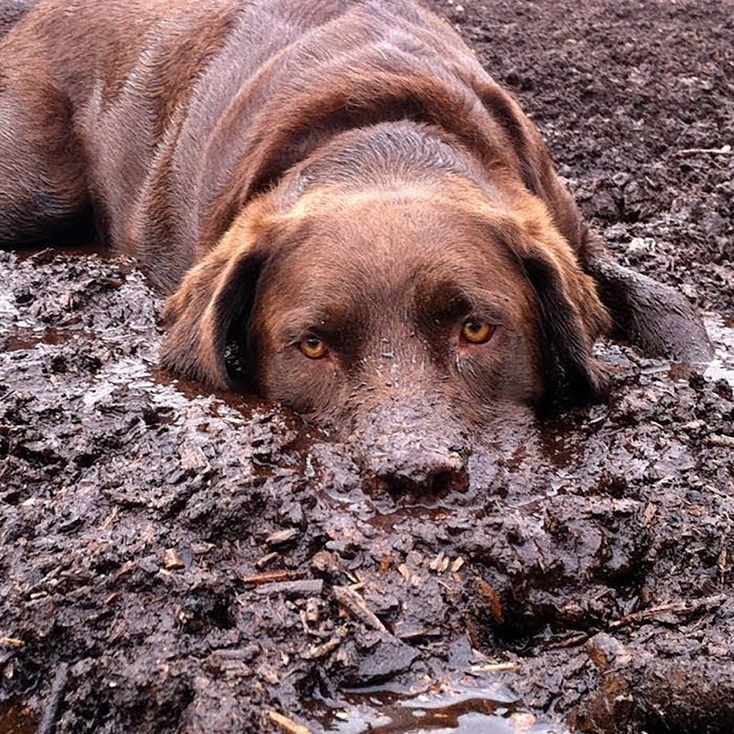How Often Should You Bathe Your Dog?
There’s nothing better than doggy cuddles. But, if your pooch is constantly rolling around in dirt, lake water, and puddles of mud, hugs from your furry friend can be more stinky than enjoyable!
Given that dogs have a natural tendency for rolling around in all things funky, you may be wondering how often you should be bathing them. In this article, we’ll talk about how to create the best hygiene routine for your dog.
Bathing routine for dogs with skin problems
Before we begin, it’s important to note that if your dog has allergies or a skin condition, you’ll want to work directly with your vet to find an appropriate bathing routine.
Underwashing might be better than overwashing
Bathing your dog too frequently can dry out the natural oils in their fur, which can result in itchiness and lack-luster hair follicles. In extreme cases, you may start to notice hot spots where your dog has scratched and licked their skin to the point of baldness.
But what constitutes overwashing? Well, as infuriating as this answer may be, it depends on the dog. Speaking in very general terms, if you’re washing your dog more than once a month, you might be overdoing it. As we’re about to discover, though, there are many factors that determine what overwashing means to your dog.
Consider your dog’s unique coat
According to official dog breed organizations, there are somewhere between 200 and 400 recognized breeds in the world. And that doesn’t account for all of the millions of crossbreeds that exist! That means that there’s a vast number of different fur types, from wire-coat to silky to downy to curly to hairless! And each variety requires its very own grooming routine.
The key is to find out what your individual dog’s fur needs are. Here are a few generalizations to get you started:
- Fluffy double coats. Dogs like Huskies, German Shepherds, Golden Retrievers, Pomeranians and Akitas should be washed every 1 to 3 months.
- Short, single layer coats. Pitbulls, Jack Russell Terriers, Rottweilers, Weimaraners and other short-coated puppers only need a bath every 3 to 6 months. With this coat type, a good wipe-down after outdoor adventures can keep them clean enough to extend the time between full baths.
- Curly coats. Nowadays, Doodles (or Poodle hybrids) are all the rage. But that hypoallergenic coat does require some extra care. Depending on how curly your dog’s coat is, they’ll need a bath about every 2 to 4 weeks.
- The hound coat. Interestingly, hounds like Bloodhounds, Basset Hounds and Beagles have a distinctive odor that harks back to their hunting days (more skin folds means better sense of smell as well as more places for bacteria to grow.) But, they still shouldn’t be bathed more than once a month. What’s more important is making sure those skin folds are clean and dry between baths by wiping them down regularly.
As you can see, coat type can drastically affect how often to bathe your dog. So, look into your dog’s breed or coat texture to get a better idea of their grooming needs.
The “unless they get dirty” clause
You’ll notice that most dog bathing advice is followed up with the phrase “unless they’re dirty.” If your dog has rolled around in the mud or taken a dip in smelly water, cleaning them can prevent bad odors or even infections. But, what should you do if your dog is constantly getting dirty?
For the truly adventurous doggo, a good rinse with the garden hose can usually do the trick. Often, it’s the soap and scrubbing that strips the oil from the hair follicle. So, giving your dog a light spray of clean, lukewarm water probably won’t result in the negative effects of overbathing. For more heavy-duty messes, consider spot-cleaning or wiping down your dog with a dog-friendly cleaning wipe.
Keep Fido clean between baths
If there’s one takeaway here, it’s that less is more when it comes to bathing. But that doesn’t mean that you have to live with a smelly dog between baths. Here are a few ways you can cut down on doggy odor until their next spa treatment:.
- Regular brushing. Brushing or combing your dog doesn’t only make them look like a doggy model. It also removes dirt and helps to distribute their natural oils. This is especially important for double-coated dogs, whose underlayer can trap moisture and bad odors if not regularly cared for.
- Gentle dry shampoo. Before brushing, you can help loosen up dirt by applying a dog-friendly dry shampoo. Mix together a bit of cornstarch and baking soda for a gentle DIY dry shampoo.
- Regular bedding washes. Dog beds, clothes, and car seat covers should be washed once a week to cut down on odors and prevent parasites.
- Good ventilation. One of the biggest culprits of doggy smell is moisture. Keep your home and car well-ventilated so that bacteria doesn’t have a chance to populate. BreezeGuard Screens can help by allowing you to drive with the windows down while keeping your dog safely inside the car.
- Less messy playdates. Your dog may love to get down and dirty in a mud puddle. But there are equally fun places to play that won’t result in a filthy dog. When possible, take your pooch to a grassy area or well-kept dog park where they’ll be less likely to need a bath. Schedule the really messy playdates, like going to the lake, for right before bath day.
You’re on your way to finding your dog’s unique bathing schedule!
Now that you know the basics of doggy bathing according to coat type, it’s time to find your own dog’s perfect plan.
Need help convincing your dog to take a bath when it’s time? Check out our article on bathing dogs who hate bath time!

